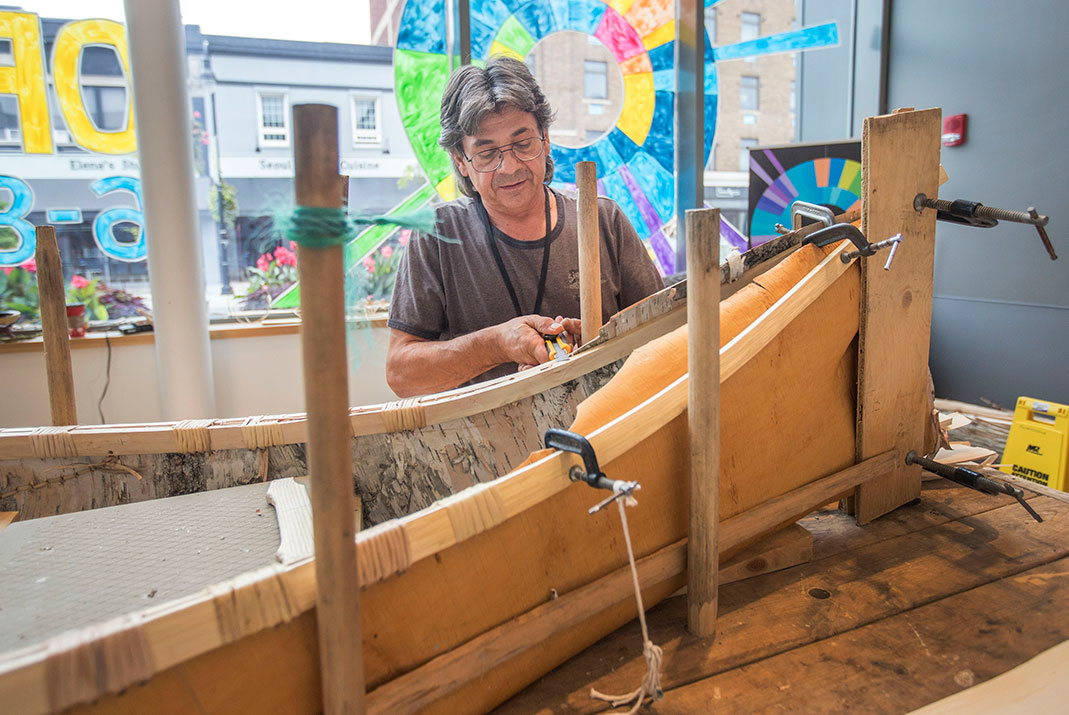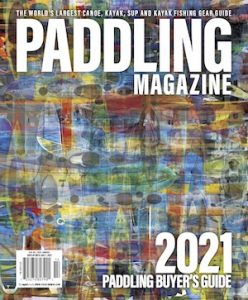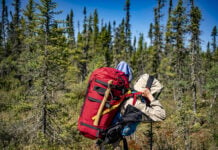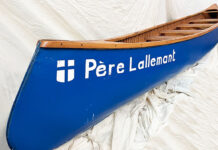Chuck Commanda is an unlikely superhero—and this is certainly the last thing he expected to be doing for a living. But in his sweat-stained T-shirt and faded jeans, here is a guy who is changing the world by collaboratively building birchbark canoes.
One of 12 grandchildren of Algonquin master canoe builders, William and Mary Commanda, Chuck remembers doing the skut work of his grans as they were harvesting bark and doing the building in their yard in Kitigan-Zibi, an Anishinabeg First Nation community in the Gatineau Hills north of Ottawa. The elder Commandas were reputed to have built more than 100 birchbark canoes, four of which have permanent homes in the Canadian Canoe Museum.
“Harder than it looks,” Chuck says of the work. “It wasn’t as if they were actually trying to teach us anything. The grandchildren were just there, doing the lifting and carrying, helping here and there. Somehow it stuck with me, but I never ever thought this was something I’d be doing for my livelihood.”

Fast forward 40-odd years, and Chuck is in a curling rink during the pandemic, on a frosty November day, working on what might be his fiftieth (he’s lost count) community birchbark canoe build since 2008. No one is more surprised than him that he left a lucrative cultural craft business, making and selling traditional Algonquin birchbark baskets—a vocation that put him in the rotunda of the Smithsonian Museum in Washington, DC, demonstrating the Anishinaabe craft to tens of thousands of curious onlookers. He set it aside with just a little encouragement from his grandfather, William.
“While he was building, my grandfather talked about the teachings of the Seven Fires wampum belt he kept for the Anishinaabe people. He always said we’re in the Seventh Fire now, a time when all people should be coming together as one to look after Mother Earth.”
Bark canoe building is, in part, about fulfilling this sacred prophecy. Moving from baskets to canoes—same materials, same techniques—has allowed Chuck to heed his grandfather’s dream and has added a significant dimension to his bark building practice.
For a 12-foot canoe, Chuck might spend three or four days harvesting about 700 feet of spruce root for lashings before building. Sourcing the birchbark and unknotted cedar can be another issue. Public builds are community events and typically take a couple weeks. Up to a dozen volunteers help, and each canoe is seen by hundreds of spectators.
With his hands and his heart, using traditional bark and split spruce root stitching formed with hand-split cedar ribs, gunwales and planking, with a different gaggle of willing onlookers and volunteers in each place, Chuck is building a canoe, yes.
With his hands and his heart, using traditional bark and split spruce root stitching formed with hand-split cedar ribs, gunwales and planking, with a different gaggle of willing onlookers and volunteers in each place, Chuck is building a canoe, yes. He is also nurturing pride in traditional know-how for Indigenous participants and building significant awareness and cross-cultural connections for everyone else.
He’s worked in schools, museums, parks, Indigenous communities and non-Indigenous communities through central Canada. In his quiet way, Chuck is now in the reconciliation business. A birchbark crusader doing his bit to right the wrongs of residential schools and generations of injustice, bringing people together, one stitch, one boat, one project and one illuminating shared moment at a time.
Chuck Commanda recently joined the National Council of the Canadian Canoe Museum, where James Raffan is the Director of External Relations. Watch the two in conversation at below.

Chuck Commanada’s birchbark canoes are crafted by hand, using traditional methods he learned from his grandparents. | Photo: Bob Tymczyszyn







